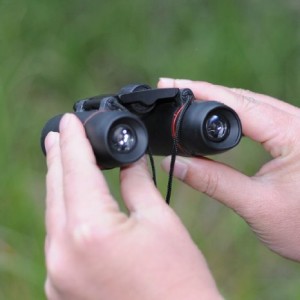 Our eyes are designed to allow us to see the things around us and even things that are a good distance away from us can be seen. However, this does not always mean that our eyes can see details of an object that is farther away from us, even if you have perfect vision. You may not see a small item and even those with the best eyesight have times when eventually everything gets a little distorted. That is why magnification is a beautiful thing for pretty much everyone, especially hunters who may want to take aim at something a couple hundred yards away.
Our eyes are designed to allow us to see the things around us and even things that are a good distance away from us can be seen. However, this does not always mean that our eyes can see details of an object that is farther away from us, even if you have perfect vision. You may not see a small item and even those with the best eyesight have times when eventually everything gets a little distorted. That is why magnification is a beautiful thing for pretty much everyone, especially hunters who may want to take aim at something a couple hundred yards away.
How Do Binoculars Work?
When you are sitting in the middle of your living room looking out your window or outside in the woods trying to see over long distances, your vision can seem a little lacking. There are details that you cannot see accurately when the object is further away from you. Even an object that is 10ft away will have less detail than one that is 5ft from you. Binoculars, monoculars, and scopes, change this by bringing that object, that is, “over there”, closer to you. For instance, an object or animal that is 100ft away can become larger, clearer, and more detailed than if you were trying to use the naked eye to see it.
What Your Eyes Actually See
Binoculars and even rifle scopes are all similar. They provide you with the ability to see things at a distance. How does it work? There is some science behind creating a perfect pair of binoculars or why one scope may be considered the best scope for 308 and others may come up short. They use lighting and other things to enhance things and make them clearer.
To help you understand, think about light. When light hits a solid object, it stops, creating a shadow. When light hits a clear item, such as glass or water, it bends a little, but shines through. That particular effect is called, “refraction”. Refraction is the key to a great set of binoculars, monoculars, scopes, and even telescopes. You may not see the refraction happen, but your eyes are immediately able to see further away.
The Science Behind Magnification
 If you look at a glass of water, you may at first feel that it is flat at the top of the water. However, closer inspection will prove that there is actually a very slight curve to the water. This slight curvature is called the “meniscus”. When you take that glass of water and put it on a newspaper and look down into the glass, everything you see will look about the same because it is still in essence, straight. If you could then make that slight meniscus larger so that you could look at it from the side, the newspaper would become distorted, but larger. A scope or a binocular set uses that effect. It is done using various shapes of lenses; one being a convex lens that bends light toward the middle and the other is a concave lens that curves in the opposite way. Both are slightly dome-shaped and the effect it creates makes light rays spread out.
If you look at a glass of water, you may at first feel that it is flat at the top of the water. However, closer inspection will prove that there is actually a very slight curve to the water. This slight curvature is called the “meniscus”. When you take that glass of water and put it on a newspaper and look down into the glass, everything you see will look about the same because it is still in essence, straight. If you could then make that slight meniscus larger so that you could look at it from the side, the newspaper would become distorted, but larger. A scope or a binocular set uses that effect. It is done using various shapes of lenses; one being a convex lens that bends light toward the middle and the other is a concave lens that curves in the opposite way. Both are slightly dome-shaped and the effect it creates makes light rays spread out.
The problem is, once the light is bent through the dome lenses it basically makes you see things upside down. This is where prisms are handy, especially with binoculars and telescopes. Rifle scopes combat this by using other lenses and various adjustments. The best scopes provide clear images without any distortion that your eyes can see.